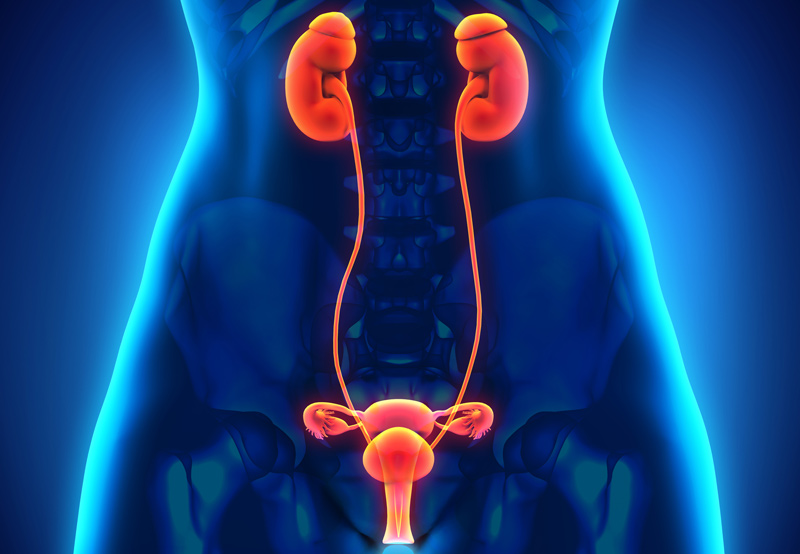

A synthetic midurethral sling is a small mesh strip composed of monofilament polypropylene used to treat stress urinary incontinence. The sling is placed through the vagina under the mid-urethra and exits from two sites in either the suprapubic or groin area. Treatment with a synthetic midurethral sling is done if conservative treatments like pelvic floor exercises and behavioral modification haven’t helped alleviate symptoms.
What is Stress Urinary Incontinence?
Stress urinary incontinence occurs when physical movements or activity, like coughing, sneezing, laughing, running, bending over, having sex, or heavy lifting, put pressure on the bladder and cause leakage of urine. The condition is not triggered by psychological stress.
Weakened muscles and other tissues that support the urethra and control the release of urine can lead to stress urinary incontinence. In a healthy urinary system, the bladder expands as it fills with urine and the urethra (which is a short tube that carries urine out of the body) stays closed to prevent leakage. The urinary sphincter also helps control the release of urine.

In women, the pelvic floor muscles and urinary sphincter may weaken due to:
- Childbirth
- Obesity
- High-impact activities like running and jumping over the course of many years
- Smoking, leaking to frequent coughing
- Illnesses that cause chronic coughing
- Age
- Previous pelvic surgery
Left untreated, the condition can lead to emotional distress, mixed urinary incontinence, and skin rash or irritation.
The Benefits of a Synthetic Midurethral Sling
Advancements in synthetic slings have brought patients the following benefits:
- Minimally invasive
- Durable
- Fewer urinary symptoms after surgery, such as urinary retention, urgency, frequency, and urge incontinence
- Quick recovery process
- Performed on an outpatient basis
Types of Midurethral Slings
The two types of midurethral sling insertion options are retropubic and transobturator.
A retropubic sling is inserted behind the pubic bone, near other organs. The risks of this approach are slightly higher than a transobturator approach. Patients may be unable to empty the bladder after surgery.
A transobturator sling is inserted through the groin, without interfering with other organs. As a result, the risk of complications is safer but patients may experience pain, including during intercourse.
The type of sling a patient should receive will depend on the availability of slings at the hospital and the surgeon’s experience.
What to Expect During Surgery
The patient will be placed under local, spinal, or general anesthesia to block nerve function and pain during the operation. Once the patient has been placed under anesthesia, the surgeon will:
1. Empty the bladder.
2. Insert a catheter to ensure the bladder is completely empty.
3. Make a small incision in the front of the vaginal wall to insert the sling.
4. Put both ends of the sling in position on both sides of the urethra, shaping it into a hammock.
5. Conduct a cystoscopy to visualize the bladder and check for injury to the bladder caused by sling placement.
Potential Risks And Side Effects
Midurethral sling surgery may lead to adverse reactions, such as urinary tract infection, bladder injury, urethral injury, vascular injury, bowel injury, pain, voiding dysfunction, vaginal mesh exposure, and mesh perforation or extrusion.
